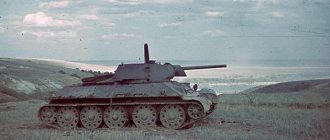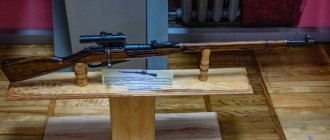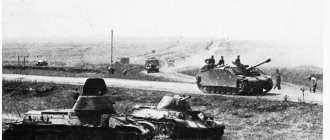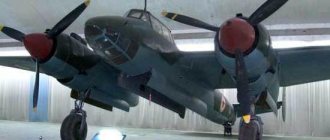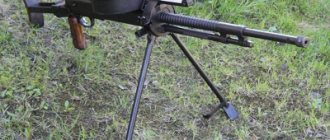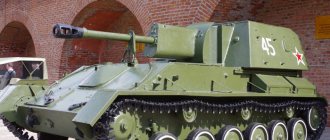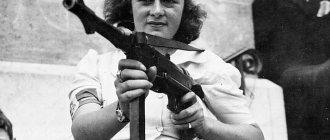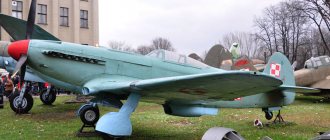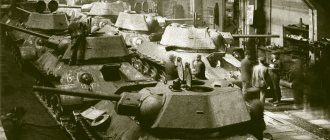How Sergei Ilyushin created a long-range bomber capable of performing a “loop”
During the Great Patriotic War, Soviet long-range aviation, unlike short-range, front-line aviation, did not develop as intensively. And this is understandable: the most important task was to destroy the enemy on the Soviet-German front, and the Allied aircraft also coped well with the bombing of Germany. Nevertheless, long-range aviation existed as part of the Red Army Air Force and gained considerable fame. And until the end of the war, its basis was the DB-3 bombers and their modification DB-3F, also known as Il-4. It was these aircraft that had the honor of being the first to bomb Berlin on August 8, 1941.
Neighbor turned distant
DB-3 became the first aircraft of aircraft designer Sergei Ilyushin. Although he had the Air Force Academy behind him. Zhukovsky and his diploma work on the development of a fighter, he did not really take up design work right away. Seven years passed before Ilyushin was allowed to create his own design team within the Central Design Bureau (TsKB) of the Moscow aircraft plant No. 39 named after Menzhinsky.
Each brigade within the Central Design Bureau dealt with specific types of aircraft, weapons, equipment, or testing. “Troika” fell to develop a high-speed short-range bomber - the same one that Andrei Tupolev’s design bureau was working on. But when the Ilyushin BB-2 aircraft as a whole had already been developed and the construction of the first prototype had already begun, it turned out that the Red Army already had a high-speed bomber: the Tupolev SB. It was a pity to lose the developments, especially since the aircraft designed by Ilyushin’s team differed favorably from the SB in its potential flight range. And then the designer took the risk of offering his car as a new long-range bomber - besides, such a one was included in the secondary plans of the design bureau.
In the minds of most aircraft designers of that time, aircraft of this type were distinguished by a large wingspan and a long flight range, achieved due to low speed: slow engines burned less fuel. The M-25 engines, which, according to the technical specifications, had to be installed on the BB-2, gave the vehicle a much higher speed. And at the same time, the new aircraft, according to all calculations, received a flight range sufficient to be declared a long-range bomber. The unusual concept could prevent the adoption of such an aircraft into service, especially since it was competing with another Tupolev aircraft - the DB-2, also known as ANT-37. It was a classic long-range bomber, with a long wing, low speed and poor maneuverability. As a result, although it had a shorter range, Sergei Ilyushin’s vehicle, which was much faster and more maneuverable, was much more to the liking of the military. They understood that fighters were becoming faster and faster, which meant that bombers should not lag far behind them.
Technical characteristics (DB-3B, late production) [edit]
General characteristics
- Crew:
three - Length:
14.22 m (46 ft 8 in) - Wingspan:
21.44 m (70 ft 4 in) - Height:
4.19 m (13 ft 9 in) - Wing area:
65.6 m2 (706 sq ft) - Empty weight:
5,030 kg (11,089 lb) - Gross weight:
7.745 kg (17,075 lb) - Maximum takeoff weight:
9,450 kg (20,834 lb) - Powerplant:
2 × Nazarov M-87 9-cyl. Air-cooled radial engines 709 kW (951 hp) each
Play
- Top speed:
439 km/h (273 mph, 237 kn) - Range:
3,800 km (2,400 mi, 2,100 mi) - Service ceiling:
9,600 m (31,500 ft) - Rate of ascent:
6.93 m/s (1,364 ft/min) - Wing load:
118 kg/m2 (24 lb/sq ft) - Power/weight:
0.18 kW/kg (0.11 hp/lb)
Armament
- 3 × 7.62 mm ShKAS machine guns
- 1 × 20 mm ShVAK cannon (not always)
- Up to 2,500 kg (5,500 lb) bombs
"Dead loop" over Red Square
In August 1935, the aircraft, which had the code TsKB-26, was shown to the People's Commissar of Defense Marshal Klim Voroshilov and the People's Commissar of Heavy Industry Sergo Ordzhonikidze. They approved the car and set Ilyushin the task of turning it into a real long-range bomber by next year. The new version received the index TsKB-30 and was already completely metal (the predecessor had an all-wood fuselage). To ensure a balance between high speed and long range, it was decided to reduce the aerodynamic drag of the aircraft as much as possible. For this purpose, a thin wing profile was chosen, and the fuselage was made as narrow as possible due to the fact that the bomb racks were placed not along the sides, but along the axis of the aircraft. In addition to this, the skin of the new car was made as smooth as possible, and the chassis was retractable.
TsKB-30 took off on its first flight on March 31, 1936, and was already shown to the general public at the May Day parade. That evening, it was inspected by Soviet leaders, including Joseph Stalin. For the distinguished guests, test pilot Vladimir Kokkinaki demonstrated all the maneuverable capabilities of the aircraft, including the “dead loop” - a feature inaccessible to other Soviet bombers. This finally decided the fate of the aircraft, which it was decided to urgently prepare for state tests. They began in June and ended in early September, after which the new bomber was adopted by the Soviet Air Force.
To prove the capabilities of his aircraft, Sergei Ilyushin did the same as other aircraft designers of that time - he built two “record” versions of the new aircraft, “Moskva” and “Ukraine”. On the first, the crew under the command of Vladimir Kokkinaki made a 7,580-kilometer flight from Moscow to Spassk-Dalniy on June 27-28, 1938. And on April 28, 1939, “Moskva” made an 8,000 km flight from Moscow to North America in less than a day along the so-called “great circle arc” (this is how transatlantic flights still fly today). This was the last ultra-long-distance flight in the pre-war USSR. And “Ukraine” had the honor of making the last women’s record flight in the Soviet Union: on July 27, 1940, Maria Nesterenko’s crew covered almost 7,000 km from Khabarovsk to Lvov.
Notes[edit]
- Gordon, page 81
- ^ abc Gordon, page 82
- ^ abcd Gordon, page 84
- ^ ab Gordon, page 83
- ↑
Gordon, pp. 85–86 - Gordon, page 86
- "Airforce_41.xls" . Archived from the original on 2006-08-31. Retrieved September 7, 2009.
- Aircraft of the Finnish Air Force (FAF in color: Ilyushin DB-3) [ permanent dead link
] - [1] Monino Museum home page
- ↑
Shcherbakov, Egor (January 17, 2022).
"" They decided to restore the bomber "". VSP.ru
(in Russian). Retrieved May 3, 2022.
From DB-3 to IL-4
When “Ukraine” set off on its record flight, Sergei Ilyushin’s new high-speed long-range bombers, designated DB-3, were already in full swing entering combat units. It was then that it became clear that the machines, which are easy to control during takeoff and landing and during evolutions in the air, require incredible efforts from the pilots during the flight. The plane turned out to be unstable in all three axes, it was constantly pulled to the right, since the propellers of both engines rotated in the same direction, and the pilots had to constantly work with the control stick and pedals. Other “childish” illnesses of the machine were also revealed, partly related to design flaws, partly to build quality.
This situation was not unusual for Soviet aviation and the aircraft industry in the pre-war years. The unusually high pace of design and construction of aircraft, coupled with the low qualifications of workers at aircraft factories, led to the fact that the aircraft adopted for service were “finished” in parts. It was not uncommon for one or another aircraft of the early series to be recalled to the factory, where it was modernized to match the model of the newer ones, making changes that helped to cope with the deficiencies discovered. On combat DB-3s they even changed the engines to more powerful ones, which were installed on later series vehicles.
Changes accumulated, as did the complaints of combat pilots, and in 1938 a large-scale modernization of the DB-3 began. By this time, the Soviet aviation industry began to master the template-based method of building aircraft, which made it possible to facilitate and simplify the process of assembling aircraft. We had to re-design the entire DB-3 set, using those profiles and materials that were suitable for the new technology. At the same time, they replaced the engines with more powerful ones, redesigned the navigator's cabin, which became elongated and more transparent, and made a number of other changes. The result was, if not a new, then almost a new aircraft, which was assigned the index DB-3F (on March 26, 1942, by decree of the State Defense Committee, it was assigned the index Il-4). During testing, the vehicle proved to be more durable, with better performance characteristics and greater bombing accuracy due to the convenience of the navigator. True, the need for the pilot to constantly “earn extra money” with the stick and pedals has not gone away, as have some other shortcomings of the DB-3.
Bibliography[edit]
- The original version of the article was based on materials from the website aircraft.ru. It was released under GFDL by the copyright holder.
- Gordon, Efim; Khazanov, Dmitry. Soviet combat aircraft from World War II
. 2: Twin-engine fighters, attack aircraft and bombers. Earl Shilton, UK: ISBN Midland Publishing Ltd. 1-85780-084-2. - Gordon, Efim; Komissarov, Dmitry and Sergey (2004). OKB Ilyushin: History of the design bureau and its aircraft
. London: Ian Allan. ISBN 1-85780-187-3. - Keskinen, Kalevi; Stenman, Kari; Niska, Klaus (1982). Venäläiset Pommittajat (Soviet bombers)
.
Suomen Ilmavoimien Historia. 9
. Espoo, Finland: Tietoteos. ISBN 952-99432-7-X. - Novarra, Heinz J.; Duvall, G. R. (1971). Russian civil and military aviation, 1884-1969
. London: Fountain Press. ISBN 0-85242-460-4. - Stapfer, Hans-Heiri (2004). Ilyushin Il-4 in action
.
Airplane. 192
. Carrollton, TX: Squadron/Signal Publications. ISBN 0-89747-471-6.
“My place is Berlin!”
The combat history of the DB-3 began in 1939, when a group of these bombers was sent to help the Republic of China. The planes have proven in practice that they are not called long-range bombers for nothing. Based in Chengdu, they attacked Japanese bases in Hankou - almost one and a half thousand kilometers away. And they did it very successfully. A little later, DB-3s took part in the Soviet-Finnish War of 1939-40, and here all their positive and negative sides were fully revealed. The lack of serious combat experience among the pilots and their command led to the fact that out of 180 bombers of this type, 74 aircraft were irretrievably lost during the Winter War - a significant number.
The DB-3 began the Great Patriotic War on the very first day, raiding a concentration of tanks near Warsaw in the middle of the day. This use of “bugs,” as the pilots called the plane, was justified, but the way it was used after that was not. The DB-3 was not suitable as a front-line bomber, since it did not have the ability to dive, nor sufficient protection against enemy fighters, especially in the lower part of the rear hemisphere, nor the speed necessary for such work (the Pe-2 had it at 150-180 km/h more). So it is not surprising that by the end of 1941, less than a hundred DB-3s remained in service, and the evacuated aircraft factories were just starting to work and did not have time to compensate for the losses.
But in experienced hands and when performing the tasks assigned to them, the DB-3 showed excellent results. The first Soviet air raid on Berlin, carried out on August 8, 1941, can serve as evidence of this. Taking off from the Cahul airfield on the island of Ezel (Moonsund archipelago), fifteen aircraft under the command of Colonel Evgeniy Preobrazhensky reached the German capital in four and a half hours and dumped their bomb load on it. The attack was so unexpected that the blackout in the city was almost a minute late. And although the crews were strictly ordered to maintain radio silence, the gunner-radio operator of one of the aircraft conveyed in plain text: “My place is Berlin! The task was completed. Let's go back to base!" Read more about this feat in our article: “ Air attack on Berlin. A super task for real super people.”
In total, from 1937 to 1946, aircraft factories produced 6,883 aircraft of various modifications. DB-3 and Il-4 fought until the end of the Great Patriotic War on all fronts and all fleets, since they were not only bombers, but also torpedo bombers and long-range reconnaissance aircraft. They had the opportunity to tow landing gliders behind enemy lines and perform night flights as “free hunters.” And after the Victory, they quickly retired, but continued to serve their country for many years, working as aerial photography aircraft.
